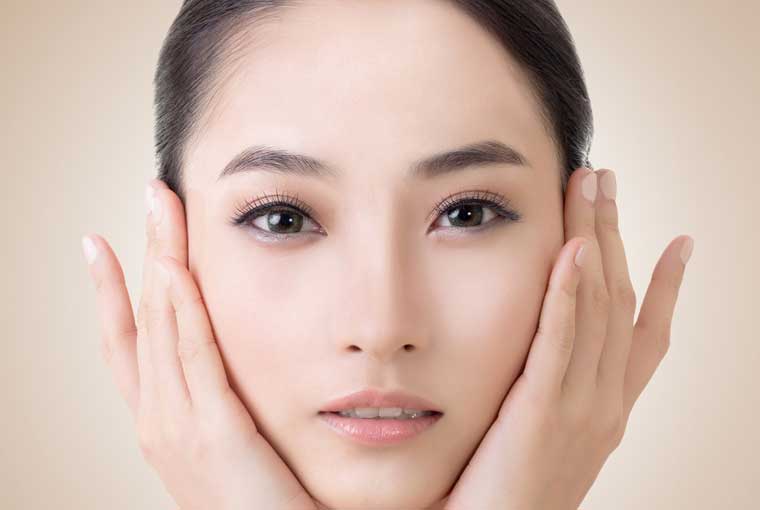
Pregnancy skin problems and how to treat them

Your skin has a gigantic job to do while you’re pregnant. It remains the first line of defence against pollutants, pollen, dust, UV rays, viruses and bacteria. It also has to grow and stretch to accommodate your growing baby. And while this is all going on, your skin has to put up with massive hormonal activity. It’s no wonder most pregnant women experience a few skin problems during the nine-month journey to their due date.
We’ve developed a quick guide to the most common pregnancy skin challenges:
Acne
Acne’s at number one because it’s the number one pregnancy skin problem. While some women breeze through pregnancy with picture-perfect skin, a lot struggle with breakouts caused by excessive sebum production. Even if you’ve never had problems with acne before, hormones can play havoc with your usually-clear skin.
Some oral acne medications are known to cause birth defects, so your approach to treating acne should be through natural skincare and diet. Drink plenty of water, eat your 5+ a day and use a double-cleansing approach to clean your skin at night. That means an oil-based cleanser followed by a gentle water-based cleanser. Always follow up with toner and moisturiser. In the morning, a single cleanse is enough. Additional advice is to exfoliate twice a week and treat yourself to a clay mask once a week.
Melasma
If you’re an outdoorsy sort of pregnant person, you could develop a type of hyperpigmentation known as melasma on your face. You can limit the potential for developing these brown splotches by using sunscreen (mineral based, rather than chemical) and wearing a hat when you’re in the sun. Melasma fades away after you’ve given birth.
Stretch marks
Many women develop stretch marks, which are reddish streaks that appear on your breasts and/or tummy. Whether you get stretch marks or not depends on genetics, how quickly you gain weight during pregnancy and the suppleness of your skin. You can’t do much about genetics, however your midwife or doctor can advise you about the right amount of pregnancy weight gain. As for skin suppleness, that can be helped with daily use of a natural emollient like Okana’s delicious avocado smash body butter.
Linea nigra
You might notice a dark line running downwards from your tummy button. This is known as a ‘linea nigra’ and it generally goes away after you’ve given birth. There’s not a lot you can do about it, except keep the skin moisturised.
Skin tags
Harmless but weird, skin tags can develop anywhere on your body during pregnancy, but are most common under the arms and breasts. There’s nothing you can do to prevent these little growths of skin, however you can have them removed after pregnancy if you want – that’s a job for your doctor. Don’t be tempted to click online ads that advertise patches for removing skin tags; they might contain toxic substances that could affect your baby.
PUPPPs
Being pregnancy sometimes means having PUPPPs, i.e. pruritic urticarial papules and plaques of pregnancy. Also called ‘pregnancy rash’, these itchy, red patches can spring up around stretch marks towards the end of pregnancy. It’s a harmless but uncomfortable condition that resolves after you’ve given birth. Keeping the skin moisturised can help with the itchiness.
Cholestasis of pregnancy
This one isn’t harmless, but nor is it particularly common. It’s an itchy skin condition caused by a liver disease linked to high amounts of pregnancy hormones that affect the normal flow of bile in the gallbladder. If you notice severe itching all over your body in the third trimester, get to the doctor. Cholestasis of pregnancy may also be accompanied by jaundice (a yellow discoloration of the skin and eyes).
Varicose veins
Pregnancy is famous for giving women varicose veins. It’s all that extra blood, plus the effects of oestrogen. As your pregnancy progresses, pressure from your uterus can make veins in your lower body swell – hey presto, you have varicose veins! There’s not a lot you can do, except eat healthily and get daily exercise. The problem might vanish entirely after your baby’s born or you can beat a path to the nearest vein clinic.
Spider veins
Just like big veins, tiny capillaries feel the stress of pregnancy. When these leak or burst, they create a small area of fine red or purple lines. Spider veins most commonly appear on the face, but they can also occur on leg skin. They can be treated successfully with laser once you’ve given birth.
Eczema
The hormonal changes of pregnancy affect how the immune system works, which can sometimes make your skin drier and a bit sensitive. You might even develop eczema, which can be uncomfortable, unsightly and itchy. Keep your showers tepid and always use a natural body moisturiser. It also helps to avoid overheating, especially when you’re sleeping.
- Obstetric cholestatsis
Ok, this one isn’t common, but you should be aware of it. Obstetric cholestatis is intensely itchy skin. It affects the palms of your hands and soles of your feel, but can spread to the rest of your body. It comes with dark-coloured urine and pale-looking poops, as well as jaundice or yellowing of the skin. It’s definitely one for your doctor.
Pyogenic granuloma
About 5% of women develop non-cancerous skin growths called pyogenic granuloma. They start out as tiny red, brown or bluish-black spot, then they grow up to 2cm in diameter. Sometimes they get to about 5cm across. Pyogenic granuloma can be uncomfortable and might bleed if knocked. Like so many pregnancy skin ailments, these usually go away once you’ve given birth. Otherwise, you can have them removed.
Pemphigoid gestationis
We’re really getting into the strange names now. Pemphigoid gestationis is a rare skin condition associated with pregnancy. Sometimes called herpes gestationis (though it has nothing to do with herpes), it’s an auto-immune condition that usually begins in the second or third trimester with itchy, red bumps – a bit like hives – around the belly button. It can spread to other parts of the body, including the abdomen, legs and arms. It’s another one that generally clears up when you baby arrives. If it’s really uncomfortable, your doctor might refer you to a dermatologist.



Leave a comment
This site is protected by hCaptcha and the hCaptcha Privacy Policy and Terms of Service apply.